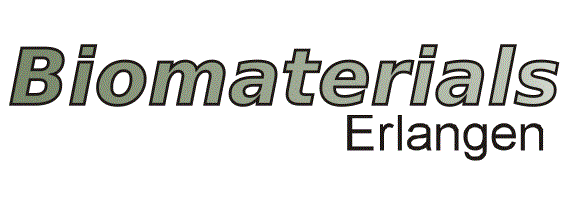Runqi Lu
Runqi Lu
Master student
Evaluation of ADA-GEL based composite inks for skeletal muscle tissue engineering applications
Supervisors: Hsuan-Heng Lu, Prof. Aldo R. Boccaccini
Biofabrication is an emerging approach that can be used to fabricate scaffolds from hydrogel loaded with living cells [1]. Alginate dialdehyde-gelatin (ADA-GEL) is considered an excellent material for biomanufacturing because of its good printability, cell viability, and degradability [1]. In some studies, mesoporous bioactive glass nanoparticles (MBGNs) with high surface area were added to ADA-GEL hydrogels to tune the properties of composite hydrogels [2]. Skeletal muscle has a certain ability to self-repair minor injuries, but it cannot repair volumetric muscle loss (VML) [3]. In response to this situation, some studies have showed the potential of MBGNs in muscle tissue regeneration [4]. The purpose of this thesis is to study the effects of MBGNs in ADA-GEL based hydrogels on the properties of the hydrogels for muscle tissue regeneration.
[1] Leite, Á. J.; Sarker, B.; Zehnder, T.; Silva, R.; Mano, J. F.; Boccaccini, A. R. (2016). Bioplotting of a Bioactive Alginate Dialdehyde-Gelatin Composite Hydrogel Containing Bioactive Glass Nanoparticles. Biofabrication 8 (3), 035005, DOI: 10.1088/1758-5090/8/3/035005
[2] Xu, H., et al., (2022) 3D Bioprinting of Multifunctional Dynamic Nanocomposite Bioinks Incorporating Cu-Doped Mesoporous Bioactive Glass Nanoparticles for Bone Tissue Engineering, Small 18, 2104996 DOI: 10.1002/smll.202104996
[3] Jia, W., Hu, H., Li, A., Deng, H., Hogue, C. L., Mauro, J. C. & Fu, Q. (2020). Glass-activated regeneration of volumetric muscle loss. Acta biomaterialia, 103, 306-317.
[4] Ege, D., Nawaz, Q., Beltrán, A. M., & Boccaccini, A. R. (2022). Effect of boron-doped mesoporous bioactive glass nanoparticles on C2C12 cell viability and differentiation: Potential for muscle tissue application. ACS Biomaterials Science & Engineering, 8(12), 5273-5283.

